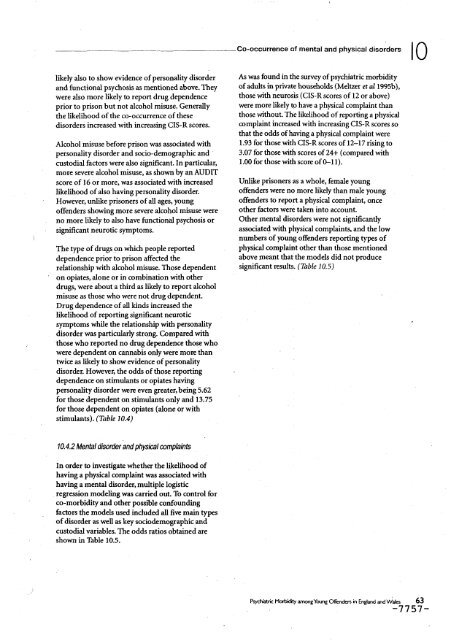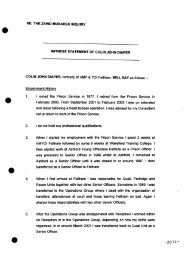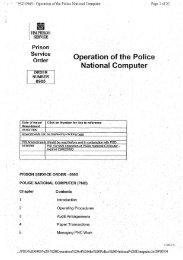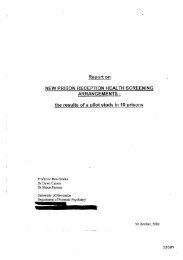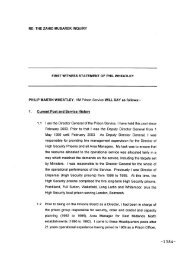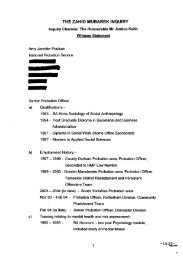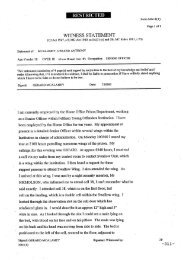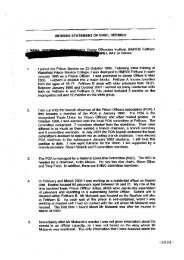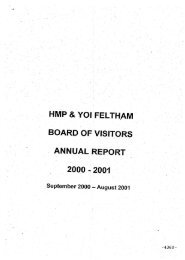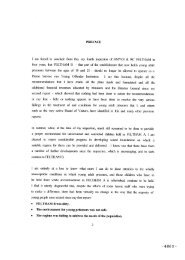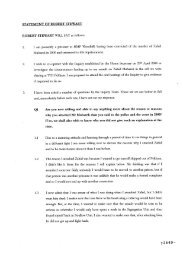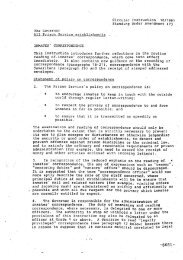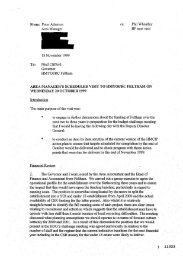Neurotic disorders
Neurotic disorders
Neurotic disorders
Create successful ePaper yourself
Turn your PDF publications into a flip-book with our unique Google optimized e-Paper software.
! f_<br />
Co-occurrence of mental and physical <strong>disorders</strong><br />
I U<br />
likely also to show evidence of personality disorder As was found in the survey of psychiatric morbidity<br />
and functional psychosis as mentioned above. They of adults in private households (Meltzer et al 1995b),<br />
were also more likely to report drug dependence those with neurosis (CIS-R scores of 12 or above)<br />
prior to prison but not alcohol misuse. Generally were more likely to have a physical complaint than<br />
the likelihood of the co-occurrence of these those without. The likelihood of reporting a physical<br />
<strong>disorders</strong> increased with increasing CIS-R scores, complaint increased with increasing CIS-R scores so<br />
that the odds of having a physical complaint were<br />
Alcohol misuse before prison was associated with 1.93 for those with CIS-R scores of 12-17 rising to<br />
personality disorder and socio-demographic and 3.07 for those with scores of 24+ (compared with<br />
custodial factors were also significant. In particular, 1.00 for those with score of0-11).<br />
more severe alcohol misuse, as shown by an AUDIT<br />
score of 16 or more, was associated with increased Unlike prisoners as a whole, female young<br />
likelihood of also having personality disorder, offenders were no more likely than male young<br />
However, unlike prisoners of all ages, young offenders to report a physical complaint, once<br />
offenders showing more severe alcohol misuse were other factors were taken into account.<br />
no more likely to also have functional psychosis or Other mental <strong>disorders</strong> were not significantly<br />
significant neurotic symptoms, associate d with physical complaints, and the low<br />
numbers of young offenders reporting types of<br />
The type of drugs on which people reported physical complaint other than those mentioned<br />
dependence prior to prison affected the above meant that:the models did not produce<br />
relationship with alcohol misuse. Those dependent significant results. (Table 10.5)<br />
on opiates, alone or in combination with other<br />
drugs, were about a third as likely to report alcohol<br />
misuse as those who were not drug dependent.<br />
Drug dependence of all kinds increased the<br />
likelihood of reporting significant neurotic<br />
symptoms while the relationship with personality<br />
disorder was particularly strong. Compared with<br />
those who reported no drug dependence those who<br />
were dependent on cannabis only were more than<br />
twice as likely to show evidence of personality<br />
disorder. However, the odds of those reporting<br />
dependence on stimulants or opiates having<br />
personality disorder were even greater, being 5.62<br />
for those dependent on stimulants only and 13,75<br />
for those dependent on opiates (alone or with<br />
stimulants). (Table 10.4)<br />
10.4.2Mentaldisorderandphysicalcomplaints<br />
In order to investigate whether the likelihood of<br />
having a physical complaint was associated with<br />
having a mental disorder, multiple logistic<br />
regression modeling was carried out. To control for<br />
co-morbidity and other possible confounding<br />
factors the models used included all five main types<br />
of disorder as well as key sociodemographic and<br />
custodial variables. The odds ratios obtained are<br />
shown in Table 10:5.<br />
Psychiatric Morbidity arnongYoung Offenders inEngland andWales 63<br />
-7757-


